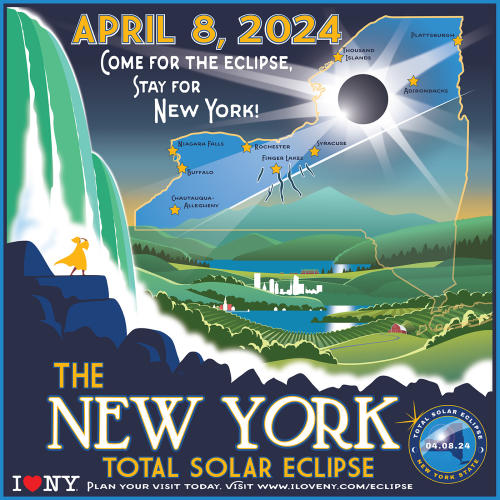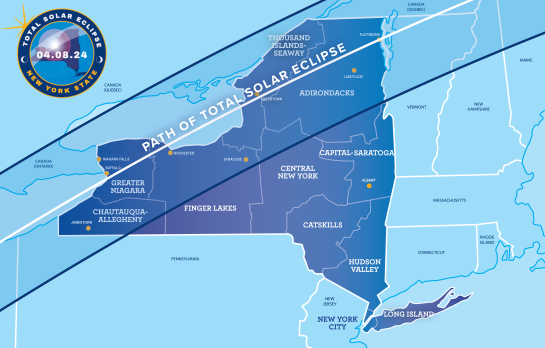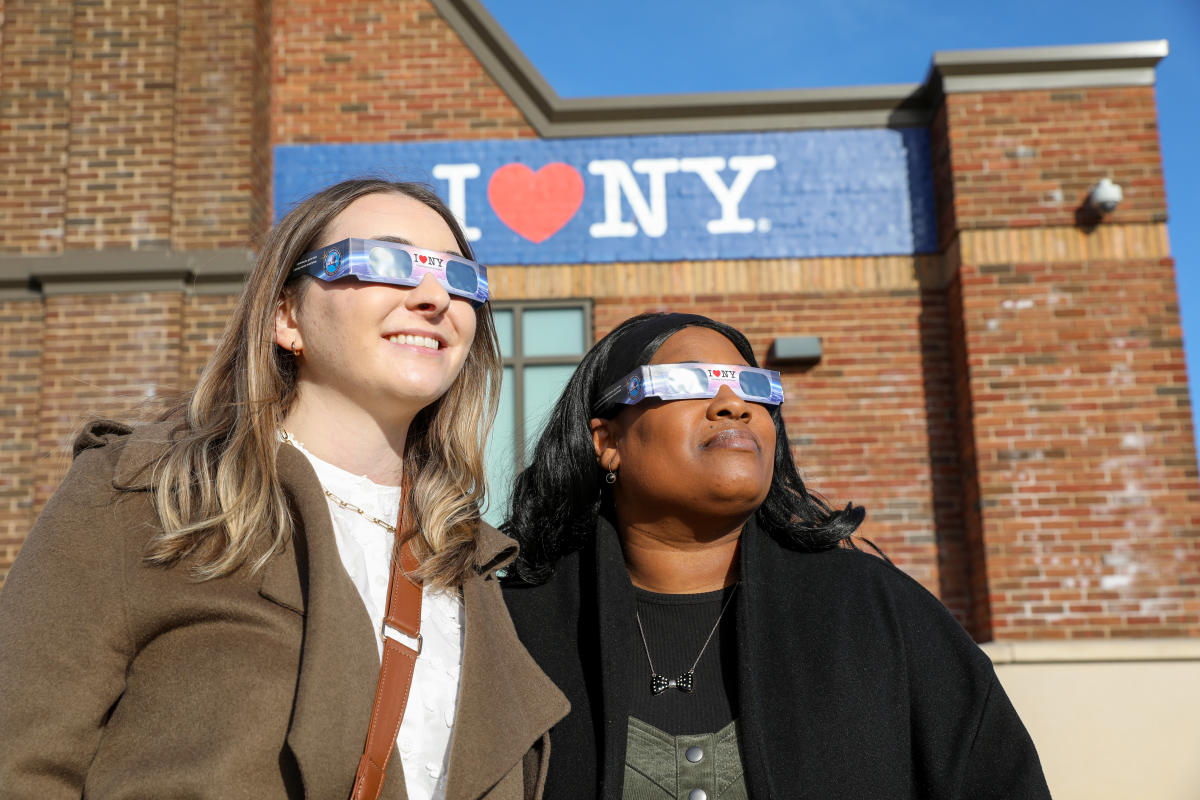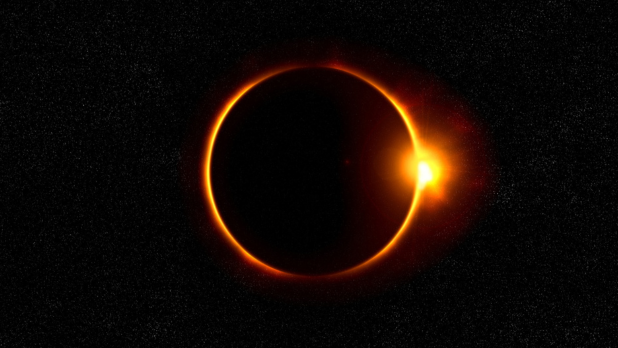Total Eclipse of New York State
Map & Times | Safety Tips | Quiz | Resources | FAQs | Playlist
A total solar eclipse is truly a once in a lifetime experience. Occurring in the same place only once every 400 years, New York State was at the center of it all on April 8, 2024.
Visitors from near and far enjoyed a front row seat to this extraordinary cosmic occurrence at amazing places and special events as the total solar eclipse cut a 124-mile path across the Empire State — from Chautauqua-Allegheny to the majestic Niagara Falls in Greater Niagara, over the pristine Finger Lakes, mighty Adirondacks, and magical Thousand Islands-Seaway.
We're already counting down to the next total solar eclipse in New York State, happening in 2079. See you there!
 NEWSLETTER
NEWSLETTER












